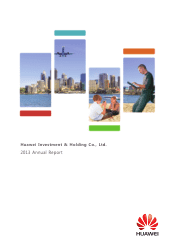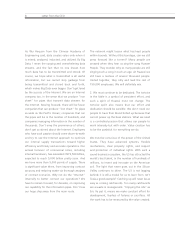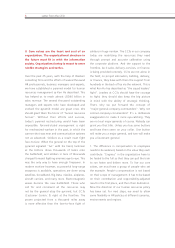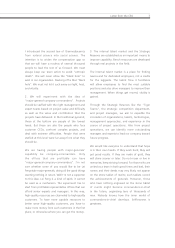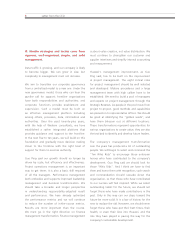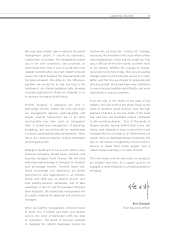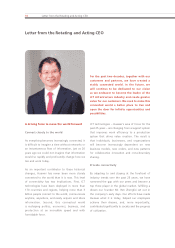Huawei 2013 Annual Report Download - page 7
Download and view the complete annual report
Please find page 7 of the 2013 Huawei annual report below. You can navigate through the pages in the report by either clicking on the pages listed below, or by using the keyword search tool below to find specific information within the annual report.
6Letter from the CEO
II. Core values are the heart and soul of an
organization. The organizational structure in
the future must fit in with the information
society. Organizational setup is meant to serve
nimble strategies and tactics.
Over the past 25 years, with the help of Western
consulting firms and the efforts of several thousand
HR professionals, business managers and experts,
we have established a pyramid model for human
resources management as Ken Hu described. This
has helped us to reach almost USD40 billion in
sales revenue. The several thousand outstanding
managers and experts who have developed and
evolved the pyramid model are great ones. We
should grant them the honor of “human resources
heroes”. Without their efforts and success,
today’s pyramid restructuring would have been
impossible. Pyramid-styled management is right
for mechanized warfare in the past, in which the
cannon-shot was near and communication systems
not as advanced. Soldiers as a result must fight
face-to-face. When the general on the top of the
pyramid signaled “Go” with his hand, tankmen
at the bottom drove thousands of tanks onto
the battlefield; and soldiers in tens of thousands
charged forward fighting enemies eye-to-eye. This
was the only way to have enough firepower. In
modern warfare however, as powerful long-range
weaponry is available, operations are done using
satellites, broadband, Big Data, missiles, airplanes,
aircraft carriers, and many more. Electromagnetic
waves become the new battlefield. Those who
call for and command all the resources may
not be the general atop the pyramid, but CC3s
(Customer Centric 3) right at the frontline. The
power projected from a thousand miles away
is more effective than the face-to-face fight of
soldiers in huge number. The CC3s in our company
today are mobilizing the resources they need
through prompt and accurate calibration using
the corporate platform. And the support to the
frontline, be it sales, delivery, services, or finance,
is being provided remotely. CC3s are not alone in
the field; on project estimation, bidding, delivery,
or finance, they have with them the support from
hundreds in the back office via the network. This is
what Ken Hu has described as “the squad leaders’
fight”. Leaders at CC3s should have the courage
to fight; they should also keep the big picture
in mind with the ability of strategic thinking.
That’s why we put forward the concept of
“major-general-company-commanders”. Why not
colonel-company-commanders? It’s a deliberate
exaggeration to make it more eye-catching. They
are not real major generals of course. Nobody can
grant you that title. Unless you buy some buttons
and have them sewn on your collar. One button
will make you a major general, and two will make
you a lieutenant general.
1. The difference in compensation to employees
needs to be widened, based on the value they each
contribute. “Engines” in the organization have to
be fueled to the full so that they can pull the train
to run faster and deliver more. To live our core
values, we must have a group of people who set
the example. People’s compensation is not based
on their scope of management; it has to be based
on their contribution and responsibility-adjusted
result in the first place, and then their dedication.
Now the direction of our human resources policy
has been set. For next steps, we need to allow
some flexibility in HR policies at different scenarios,
environments and regions.

